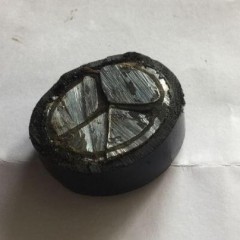The main types of busbars
Briefly about the advantages and disadvantages
Of the shortcomings of the products, I would like to highlight:
- Longer delivery time when compared with cable. The fact is that the busbar is made specifically for your project. It’s rare when there are ready-made sections in the warehouse that suit your conditions. In this regard, you have to wait until it is manufactured and delivered.
- The need for system design by a specialist. There are many nuances in the preparation of the project, if you do not have experience in this matter, the slightest mistake can cost a lot.
- The rigidity of the structure does not allow changing the route of the system. If you did not take into account the ventilation duct intersecting in the same plane with the mounted line in the project, you can get around it only by ordering new, special parts. An order will entail a long wait for delivery and material costs.
As for the advantages of the busbar trunking over the cable, they are as follows:
- More aesthetic appearance of the mounted line.
- Installation is faster, with less effort.
- The design is fireproof, in addition it has IP degree of protection not less than 55, which allows you to reliably protect the power line from moisture and dust.
- Due to the rectangular shape, busbars can save energy, because current resistance decreases and active energy decreases, while limiting reactive energy.
- Aluminum housing quickly removes heat.
- The service life of the products reaches 30 years.
- Shielding cover provides protection against electromagnetic radiation in the workplacewhich is equally important.
Some of the benefits provided apply only to types such as trunk, distribution and trolley. In other words, not everyone refers to the lighting type of products. Below we will just talk about what busbars are.
Existing varieties
Trunk
This type of design is designed to transfer electricity from the substation to the production premises. Most often, the main busbar trunking is used if the equipment in the production is located in rows throughout the workshop and there is a possibility of a change in the location of the machines.
Trunk systems are able to withstand currents up to 4000 A and are also designed for a sufficiently large number of branches that are needed to connect electrical equipment.As a rule, 2 branches per 6 meters of length are provided.
There are main busbars of alternating current (marking ШМА) and direct (ШМАД). The design of the type of SHMA may include three or four tires. In the first case, each phase is represented by two rectangular insulated buses made of aluminum. In this case, zero are two corners (also aluminum), which are located outside the housing and are used for mounting the busbar trunking. As for the system of 4 tires, in this case they are all located inside the structure.
The main structures of the ShMA type are equipped with sections of 0.75 dimensions; 1.5; 3 and 3.5 meters. Sections can be straight, adjustable, tee, corner branch or connecting, as can be seen in the diagrams below.
In addition, there are 2 more types of sections of the SHMA: phasing (allow you to alternate phases) and flexible (to bypass the obstacles that arise on the way of laying). Most often, direct three-meter sections are used in the design of the busbar.
By the way, the sections are connected to each other with the help of single-bolt clamps; however, a more reliable connection is achieved by welding.
ShMAD is designed for direct current up to 6300 A. Marking ShMADK means that the tires are protected by covers.
Distribution
The purpose of the distribution type of products (SHRA) is the distribution of electrical energy from the main busbar directly to consumers. Such designs are used to connect single-phase and three-phase receivers.
They are completed from corner sections, tee and straight lines, 3 meters long. On the 3-meter section provides from 3 to 6 places for connecting receivers. Ballasts are designed for currents up to 630 A. All 4 buses are also rectangular and made of aluminum, they are non-insulated. The sections are connected by bolts.
We draw your attention to the fact that the distribution type of busbar trunking can be marked SHRM, which means - copper busbars.
Lighting
This type of design can be used not only in production, but also in everyday life, as well as in shopping centers for window dressing. Sections can be straight, angular, introductory and flexible. Standard lengths are 1.5 and 3 meters.
The device is represented by four insulated conductors, cross section 6 mm2. Lighting busbar trunking (SCO) is able to withstand currents up to 25 A. This type of construction is used in 220 and 380 Volt networks for installation and connection of track lights.
Trolley
Well, the last type of busbar trunking is the troll busbar (ShTM). A scope - food of cranes, cableways, monorails, etc. STMs are designed for voltages of 380 and 660 volts in networks with earthed neutral. The rated current is 200 or 400 A.
This variety of designs is equipped with straight sections, lengths from 0.75 to 3 meters, as well as angular at 45 and 90 degrees. This allows the assembly of the track of almost any circuit. To connect the sections using special couplings.
Finally, we recommend that you watch the useful video, which clearly shows the installation process of the main system:
So we examined what types of busbars are, and what advantages and disadvantages these products have in comparison with cable. We hope the information was useful and interesting for you!
We also recommend reading:












